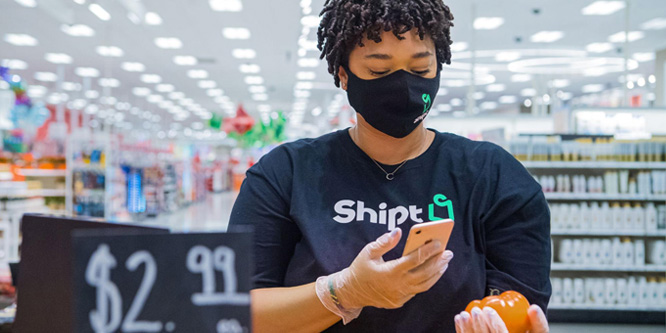THIS MORNING on RetailWire.com I jumped on my high horse again with this little screed about grocery delivery strategies for supermarkets. As usual, I didn’t shade my opinion about 3rd party solutions, and I know some will take exception. That’s OK. The debate is important.
For perspective, when I founded the VStoreNews e-letter in 1998 I posited a world where grocery stores delivered everything – their own products plus those of other local retailers. Hasn’t happened yet.
The Grocery Delivery Debate
My comments today on RetailWire.com:
I’m squarely in the camp that advocates for own control of all customer-facing services by the retailer. High delivery costs remain a challenge, but this factor must be accounted for in a comprehensive manner. What do you really risk when you put digital moments of truth in the hands of an outside solution provider?
Third-party services intermediate the retailer’s service experience and divert essential data about shopper behavior. I could never agree to hand over control of my brand relationships to gig-workers directed by a company that is angling to become my competitor.
It is a competitive necessity for supermarkets to offer digital selling. Once they make that omni-channel commitment, imperatives follow regarding order-taking and fulfillment. Shoppers will choose home delivery, in-store pickup and curbside pickup according to their momentary convenience. This new complexity is daunting enough that many retailers have “partnered” with 3rd parties while they learn the ropes.
I say they should not renew those contracts, but apply early learnings to define a more permanent solution which integrates with their own loyalty programs and operations.
How Retailers Should Respond
So if you’re working with a 3rd party delivery service, start planning your exit now. Don’t even consider inventing your own systems! There are numerous vendors competing fiercely for your business who have worked out the end-to-end solution. License a white-labeled platform and focus on creating a total online shopping experience that gains share of wallet and cements loyalty.
That means retailers must cultivate the knowhow to fulfill and stage orders within or adjacent to your stores or “dark” facilities with near-perfect item availability. Unify your digital shopping app with your loyalty program. Use geo-location to precisely time curbside deliveries. Hire and train workers to take “ownership” of each pickup and delivery encounter as representatives of your brand.
Delivery is essential, but it is not the most important element of this transition for grocers. If you do build a strong delivery network, however, consider offering it to other local retailers as a “common carrier” for their deliveries. Heck, you could even step up as a last-mile delivery vendor for Amazon. Once your vans are passing through the neighborhoods anyway…

